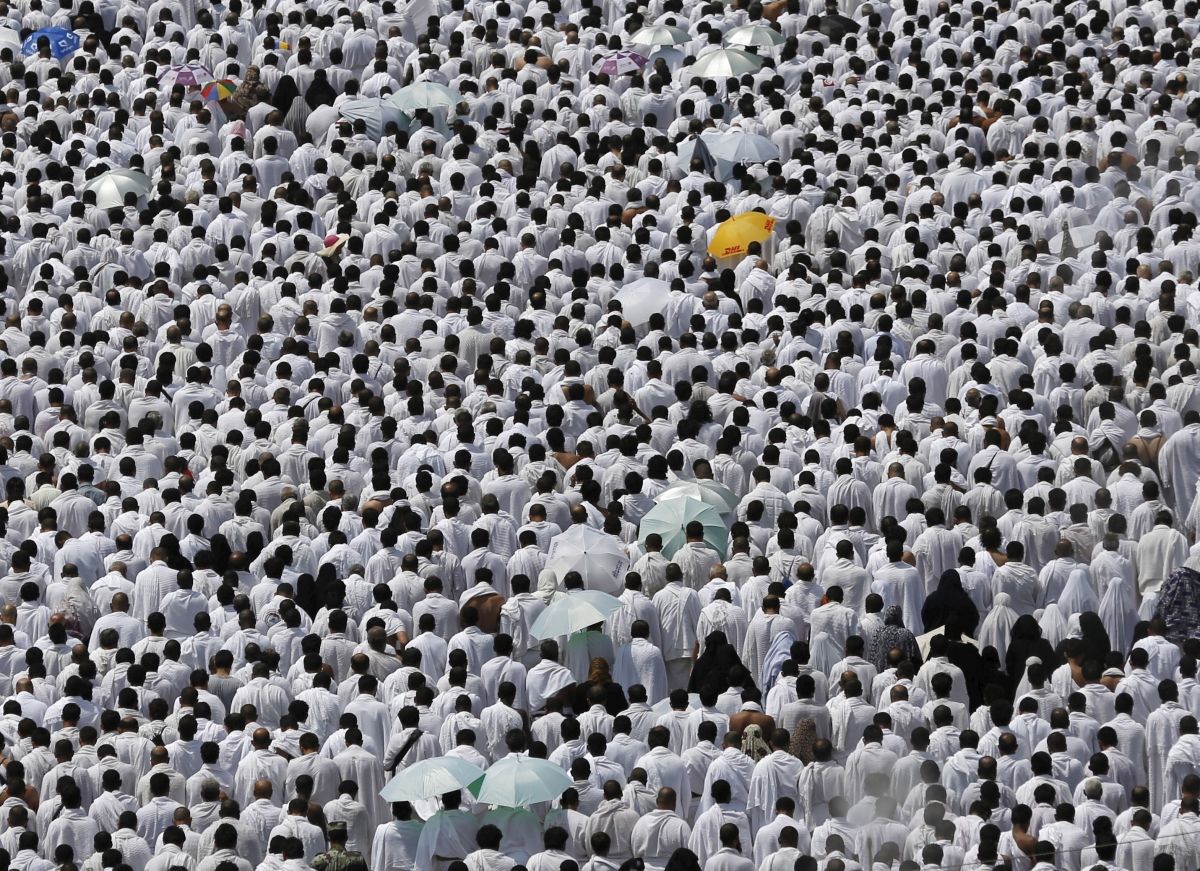
At least 717 people were killed during the second day of the hajj pilgrimage near the Islamic holy city of Mecca in Saudi Arabia on Thursday, in a human tragedy blurred by conflicting accounts of whether their deaths were caused by a crush or a stampede.
Saudi officials have blamed the latter for the deaths of hundreds of pilgrims traveling through Mina to carry out the "Stoning of the Devil" rite where they each throw seven stones at the pillars of Jamarat, seen as a representation of the devil.
The country's health minister, Khaled al-Falih, held pilgrims who had moved "without respecting the timetables" of hajj responsible for the incident, according to a statement quoted by AFP news agency.
"If the pilgrims had followed instructions, this type of accident could have been avoided," he reportedly said.
However, crowd management experts have refuted the Saudi account and believe that a deadly crush, known as a "progressive crowd collapse," is to blame for so many deaths on Mina's Street 204.
A mass of pilgrims was traveling in one direction toward the pillars to perform in the rite while a large number was traveling in the opposite direction to return from the pillars, according to eyewitness accounts, as two million people were making their way through the streets of Mina to take part in the ceremony.
But what could have really caused this tragedy, the deadliest to hit the pilgrimage in 25 years?
G. Keith Still, a professor of crowd science at Manchester Metropolitan University who has worked with the Saudi authorities on the design of the Jamarat Bridge that leads to the pillars, says that while he has not been on the scene, today's disaster has none of the hallmarks of a stampede, as reported by many media outlets.
"That particular route, 204, is one of the main arterial routes. There's only so much it will take," Still told Newsweek by phone. "If the capacity of the crowds trying to move down those routes exceeds the road's capacity, you get a crush."

"We've got a very sad situation where the crowd flows in two different directions at the exceeded safe capacity of the system and it is just like a clot," he adds. "It is built up and pressure is built up on both sides."
He likens Thursday's Hajj crush to the tragedies at Hillsborough football stadium in 1989, where 96 football fans were crushed due to excess spectators in the stand, and the 2010 Love Parade Festival in Germany, where 21 people died from crushed rib cages.
Anne Templeton, doctoral candidate in psychology at the University of Sussex with a focus on collective behaviour in crowds, says that the use of the word stampede implies that the pilgrims were running mindlessly and had caused the deaths themselves in order to sensationalize the tragic incident.
"The rhetoric of 'stampede' is often used to imply that the crowd is animalistic or mindless, but from a crowd psychology point of view, I'm sure that there was a logical explanation for the crush," she writes in an email to Newsweek. "The density of the hajj has been shown to reach up to 6-8 people per square metre, so I would be very surprised if a stampede (implying people running mindlessly) could occur in the first place."
If a crush was indeed the cause of the hundreds of deaths in Mina, what happens in such a situation to cause fatalities?
If the density of a crowd is too much for the situated area, people become compressed together from both horizontal pushing and vertical crushing, whereby people fall on top of one another or climb on one another to try and breathe, says Still. The sheer force of people pushing against one another or falling on one another can cause asphyxiation and a literal crushing of the ribcage.
"With six or seven people per sq meter across a large area and your chest cavity gets restricted, you can't breathe. At that point, shockwaves and progressive crowd collapse can occur," he continues. "If you've got crowds coming in from opposite directions, they are moving forward and they have no idea what is happening ahead, so it just piles up. That has been fairly typical of these types of incidents [at the Hajj]."
Whether the cause of the Hajj tragedy was a stampede or a crush, the death toll may rise even further and Saudi Arabia must contemplate new and safer ways to accommodate up to three million people within a small city for the holiest Islamic event of the year.
Uncommon Knowledge
Newsweek is committed to challenging conventional wisdom and finding connections in the search for common ground.
Newsweek is committed to challenging conventional wisdom and finding connections in the search for common ground.
About the writer
Jack is International Security and Terrorism Correspondent for Newsweek.
Email: j.moore@newsweek.com
Encrypted email: jfxm@protonmail.com
Available on Whatsapp, Signal, Wickr, Telegram, Viber.
Twitter: @JFXM
Instagram: Read more
To read how Newsweek uses AI as a newsroom tool, Click here.








